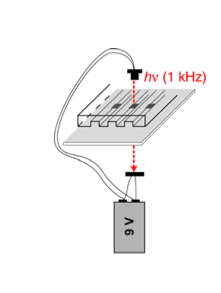
Problem being addressed[edit | edit source]
Early detection of HIV can help to effectively control the spread of the virus. Existing diagnostic systems, especially enzyme-linked immunosorbent assays (aka ELISA), are bulky, expensive, and require electricity, lengthy incubation periods, and multiple pipetting stages. The POCKET combines the immunoassay unit and the detector unit into a portable and cost-effective model.
Detailed description of the solution[edit | edit source]
A blood sample is delivered to each channel of the device and is analyzed by an antibody-detecting strip. Protein fragments on the strip bind HIV antibodies. A series of rapid, yet precise chemical assays are performed on detected antibodies for identification and quantification.
Designed by[edit | edit source]
- Designed by: The Whitesides Research Group at Harvard University. Their home page is found here.
- Manufacturing: Cambridge, Massachusetts, USA
When and where it was tested/implemented[edit | edit source]
The prototype was developed in 2004 at Harvard, and as of 2004, Harvard University's Office for Technology and Trademark Licensing has been negotiating with a start-up firm to commercialize the POCKET.
References[edit | edit source]
Peer-reviewed publication[edit | edit source]
Linder, V., Sia, S.K., &d Whitesides, G.M. (2005). Reagent-loaded cartridges for valveless and automated fluid delivery in microfluidic devices. Anal Chem, 77(1), 64-71.
Sia, S.K., Linder, V., Parviz, B.A., Siegel, A., & Whitesides, G.M. (2004). An integrated approach to portable and low-cost immunoassay for resource-poor settings. Angew Chem Int Ed Engl, 43(4), 498-502. PDF can be found here.